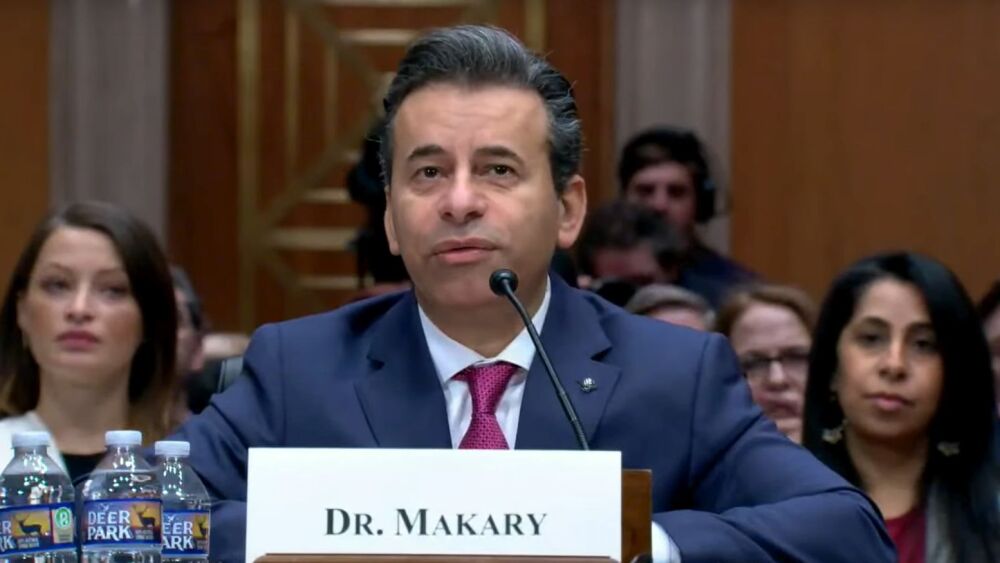- Data underscore the urgent need for therapies that address the cardiovascular and musculoskeletal complications and long-term systemic effects of ENPP1 and ABCC6 Deficiencies in children -
- Inozyme and GACI Global launched PROPEL Registry to further understanding of these rare, life-threatening diseases (NCT06302439) -
BOSTON, Sept. 26, 2024 (GLOBE NEWSWIRE) -- Inozyme Pharma, Inc. (Nasdaq: INZY) (“the Company” or “Inozyme”), a clinical-stage biopharmaceutical company developing innovative therapeutics for rare diseases that affect bone health and blood vessel function, is presenting four posters at the American Society for Bone and Mineral Research (ASBMR) 2024 Annual Meeting, including new data that demonstrate the progression and impact of rare bone and blood vessel diseases in children. These presentations include findings highlighting the significant medical burden associated with ENPP1 Deficiency and early-onset ABCC6 Deficiency, new data from a natural history study that provides critical insights into the progression of ENPP1 Deficiency, and the launch of a global registry to enhance our understanding of these diseases.
“Given their high mortality rate, there is an urgent unmet need for patients affected by these rare bone and blood vessel diseases. For instance, more than half of all infants with ENPP1 Deficiency die within six months, and those that survive often face major and potentially fatal complications throughout their lives,” said Kurt Gunter, M.D., Chief Medical Officer of Inozyme Pharma. “These new data underscore the significant and multifaceted impact of ENPP1 and ABCC6 Deficiencies, further highlighting the significant need for therapies that address the immediate and long-term systemic complications associated with these conditions. At Inozyme, we are dedicated to unlocking the full potential of our lead candidate, INZ-701, a potentially transformative treatment for patients and their families facing these diseases.”
“As the data from these retrospective analyses demonstrates, the impact of these life-threatening conditions is more significant in both the short and long-term than we had understood, particularly in terms of cardiovascular and musculoskeletal complications,” said Christine O’Brien, co-president of GACI Global. “We’re excited to work with Inozyme to launch the PROPEL Registry to prospectively collect clinical data and patient-reported outcomes that will provide a comprehensive understanding of the burden of illness and progressive nature of ENPP1 Deficiency and early-onset ABCC6 Deficiency.”
Natural History Study of ENPP1 Deficiency
ENPP1 Deficiency is a serious and progressive rare disease that affects blood vessels, soft tissues, and bones. Individuals who present in utero or in infancy are typically diagnosed with generalized arterial calcification of infancy (GACI Type 1), with about 50% of these infants not surviving beyond six months. Key findings of the retrospective analysis included:
- In the 84 patients with ENPP1 Deficiency, cardiovascular complications and arterial calcifications developed early in life, predominately within the first few months.
- A striking 88% of patients experienced ectopic calcifications, with 81% showing arterial calcification and 66.7% showing aortic calcification. Cardiovascular complications, including hypertension, heart valve defects and heart failure, were noted in 76% of patients.
- Among the 84-patient cohort, 51 were diagnosed with Generalized Arterial Calcification of Infancy (GACI) alone and only 19 survived beyond infancy; 22 were diagnosed with GACI, survived beyond infancy and progressed to Autosomal Recessive Hypophosphatemic Rickets Type 2 (ARHR2); and 11 patients presented initially with ARHR2.
- Musculoskeletal complications, including phosphate-wasting rickets, bowed extremities, and pain, were documented in all patients diagnosed with ARHR2, with 45% of ENPP1 Deficiency survivors showing symptoms by age 3 and 75% by age 11.
- The data highlight that 95% of surviving ENPP1 Deficiency patients are expected to experience cardiovascular, musculoskeletal, and other organ complications, underscoring the lifelong burden of the disease.
Title: Lifetime Accumulation of Calcification and Clinical Complications in Patients with ENPP1 Deficiency (GACI and ARHR2)
Format: Poster Presentation
Author/Presenter: Carlos Ferreira, M.D., of the National Institutes of Health (NIH)
Session Dates and Times:
Rare Bone Disease Symposium: Thursday, September 26, 2024, 8:00 a.m. – 6:00 p.m. ET
Early Career Spotlight: Friday, September 27, 2024, 4:54 p.m. ET
Plenary during Welcome Reception: Friday, September 27, 2024, 5:30 – 7:30 p.m. ET
Poster Session I: Saturday, September 28, 2024, 2:15 – 3:45 p.m. ET
Retrospective Observational Study of ENPP1 Deficiency and Early-onset ABCC6 Deficiency
Like ENPP1 Deficiency, ABCC6 Deficiency is a progressive and debilitating rare disease that affects blood vessels and soft tissues. Infants with ABCC6 Deficiency are diagnosed with generalized arterial calcification of infancy (GACI Type 2), which is similar to GACI Type 1, the infant form of ENPP1 Deficiency.
- This study described the clinical events and interventions in patients with ENPP1 Deficiency (n=14) and early-onset ABCC6 Deficiency (n=9).
- ENPP1 Deficiency was associated with a high burden of cardiovascular complications in infancy, with additional frequent medical interventions including orthopedic surgery (64%) and hearing aids (43%).
- Early-onset ABCC6 Deficiency patients showed significant cardiovascular complications, and 44% experienced stroke.
Title: The Medical Burden of ENPP1 Deficiency and Early-Onset ABCC6 Deficiency from a Retrospective Observational Study
Format: Poster Presentation
Author/Presenter: David R. Weber, M.D., MSCE, Attending Physician and Medical Director of the Center for Bone Health at Children’s Hospital of Philadelphia
Session Dates and Times:
Rare Bone Disease Symposium: Thursday, September 26, 2024, 8:00 a.m. – 6:00 p.m. ET
Plenary during Welcome Reception: Friday, September 27, 2024, 5:30 – 7:30 p.m. ET
Poster Session I: Saturday, September 28, 2024, 2:15 – 3:45 p.m. ET
Additional poster presentations include:
Title: PROPEL: Prospective Observational Registry for ENPP1 Deficiency and Infantile-Onset ABCC6 Deficiency
Format: Poster Presentation
Author/Presenter: Lothar Seefried, M.D., of the Orthopedic Department of the University Hospital at the Julius-Maximilians University Würzburg, Germany
Session Dates and Times:
Energy Metabolism in Skeletal Development and Disease: Thursday, September 26, 2024, 8:30 a.m. – 5:30 p.m. ET
Poster Session I: Saturday, September 28, 2024, 2:15 – 3:45 p.m. ET
Title: Therapeutic Application of ENPP1-Fc Prevent Muscle Calcification Following Cardiotoxin-induced-muscle Damage in Abcc6 -/- mice
Format: Poster Presentation
Author/Presenter: Kevin O’Brien, Principal Scientist, Inozyme Pharma
Session Date and Time:
Late Breaking Poster Session I: Saturday, September 28, 2024, 2:15 – 3:45 p.m. ET
About ENPP1 Deficiency
ENPP1 Deficiency is a serious and progressive rare disease that affects blood vessels, soft tissues, and bones. Individuals who present in utero or in infancy are typically diagnosed with generalized arterial calcification of infancy (GACI Type 1), with about 50% of these infants not surviving beyond six months. Children with this condition typically develop rickets, specifically autosomal-recessive hypophosphatemic rickets type 2 (ARHR2), while adolescents and adults may develop osteomalacia, or softened bones. ARHR2 and osteomalacia cause pain and difficulty with movement. Additionally, patients may experience hearing loss, calcification in arteries and joints, and heart problems.
Biallelic ENPP1 Deficiency affects approximately 1 in 64,000 pregnancies worldwide. Initially, it was believed to only impact individuals with two copies of the mutated gene. However, many individuals with just one copy of the mutated gene (monoallelic ENPP1 Deficiency) also exhibit severe symptoms. This suggests that the worldwide prevalence of ENPP1 Deficiency may be much higher than current estimates, which are based solely on biallelic cases. Currently, there are no approved therapies for ENPP1 Deficiency.
About ABCC6 Deficiency
ABCC6 Deficiency is a progressive and debilitating rare disease that affects blood vessels and soft tissues. Infants with ABCC6 Deficiency are diagnosed with generalized arterial calcification of infancy (GACI Type 2), which is similar to GACI Type 1, the infant form of ENPP1 Deficiency. Pediatric patients who survive beyond the first year of life may develop neurological disease, including strokes, and cardiovascular diseases due to ongoing vascular calcification and stenosis. In older individuals, ABCC6 Deficiency manifests as pseudoxanthoma elasticum (PXE), characterized by abnormal mineralization in blood vessels and soft tissues, affecting the skin, visual function, and vascular system.
Biallelic ABCC6 Deficiency is estimated to affect 1 in 25,000 to 1 in 50,000 individuals worldwide. Initially, it was believed to only impact individuals with two copies of the mutated gene. However, many people with just one copy of the mutated gene (monoallelic ABCC6 Deficiency) also exhibit severe symptoms. This suggests that the worldwide prevalence of ABCC6 Deficiency may be much higher than current estimates, which are based solely on biallelic cases. Currently, there are no approved therapies for ABCC6 Deficiency.
About Inozyme Pharma
Inozyme Pharma is a pioneering clinical-stage biopharmaceutical company dedicated to developing innovative therapeutics for rare diseases that affect bone health and blood vessel function. We are experts in the PPi-Adenosine Pathway, where the ENPP1 enzyme generates inorganic pyrophosphate (PPi), which regulates mineralization, and adenosine, which controls intimal proliferation (the overgrowth of smooth muscle cells inside blood vessels). Disruptions in this pathway impact the levels of these molecules, leading to severe musculoskeletal, cardiovascular, and neurological conditions, including ENPP1 Deficiency, ABCC6 Deficiency, calciphylaxis, and ossification of the posterior longitudinal ligament (OPLL).
Our lead candidate, INZ-701, is an ENPP1 Fc fusion protein enzyme replacement therapy (ERT) designed to increase PPi and adenosine, enabling the potential treatment of multiple diseases caused by deficiencies in these molecules. It is currently in clinical development for the treatment of ENPP1 Deficiency, ABCC6 Deficiency, and calciphylaxis. By targeting the PPi-Adenosine Pathway, INZ-701 aims to correct pathological mineralization and intimal proliferation, addressing the significant morbidity and mortality in these devastating diseases.
For more information, please visit https://www.inozyme.com/ or follow Inozyme on LinkedIn, X, and Facebook.
Cautionary Note Regarding Forward-Looking Statements
Statements in this press release about future expectations, plans, and prospects, as well as any other statements regarding matters that are not historical facts, may constitute "forward-looking statements" within the meaning of The Private Securities Litigation Reform Act of 1995. These statements include, but are not limited to, statements relating to the potential benefits of INZ-701. The words "anticipate," "believe," "continue," "could," "estimate," "expect," "intend," "may," "plan," "potential," "predict," "project," "should," "target," "will," "would," and similar expressions are intended to identify forward-looking statements, although not all forward-looking statements contain these identifying words. Any forward-looking statements are based on management's current expectations of future events and are subject to a number of risks and uncertainties that could cause actual results to differ materially and adversely from those set forth in, or implied by, such forward-looking statements. These risks and uncertainties include, but are not limited to, risks associated with the Company's ability to conduct its ongoing clinical trials of INZ-701 for ENPP1 Deficiency, ABCC6 Deficiency, and calciphylaxis; enroll patients in ongoing and planned trials; obtain and maintain necessary approvals from the FDA and other regulatory authorities; continue to advance its product candidates in preclinical studies and clinical trials; replicate in later clinical trials positive results found in preclinical studies and early-stage clinical trials of its product candidates; advance the development of its product candidates under the timelines it anticipates in planned and future clinical trials; obtain, maintain, and protect intellectual property rights related to its product candidates; manage expenses; comply with covenants under its outstanding loan agreement; and raise the substantial additional capital needed to achieve its business objectives. For a discussion of other risks and uncertainties, and other important factors, any of which could cause the Company's actual results to differ from those contained in the forward-looking statements, see the "Risk Factors" section in the Company's most recent Annual Report on Form 10-K filed with the Securities and Exchange Commission, as well as discussions of potential risks, uncertainties, and other important factors, in the Company's most recent filings with the Securities and Exchange Commission. In addition, the forward-looking statements included in this press release represent the Company's views as of the date hereof and should not be relied upon as representing the Company's views as of any date subsequent to the date hereof. The Company anticipates that subsequent events and developments will cause the Company's views to change. However, while the Company may elect to update these forward-looking statements at some point in the future, the Company specifically disclaims any obligation to do so.
Contacts
Investors:
Inozyme Pharma
Stefan Riley, Senior Director of IR and Corporate Communications
(857) 330-8871
Stefan.riley@inozyme.com
Media:
Biongage Communications
Todd Cooper
(617) 840-1637
Todd@biongage.com





